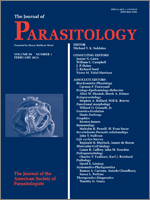Serum samples from 197 clinically healthy dogs residing in the Banat Region, the western historical part of Romania, were assayed by an indirect fluorescent antibody test for the presence of anti-Babesia canis antibodies. Overall, the seroprevalence was 19.8% (39/197). The percent of seropositive dogs in rural areas (28.4%; 19/67) was significantly higher (P < 0.05) compared to dogs living in urban areas (15.4%; 20/130). Seroprevalence of B. canis infection in hunting dogs was also found to be significantly higher (P < 0.05) compared to canines with other lifestyles, but no significant difference was found between companion and kennel dogs. The statistical analysis showed that no significant differences (P > 0.05) were present between the seroprevalence of infected animals associated with age, gender, or breed. The hunting lifestyle was the only factor (OR = 4.57; 95% CI = 2.1–10.2; P = 0.002) positively associated with seroprevalence in dogs and can be considered the risk factor in the acquisition of infection. Also, the results of the present survey indicate that infection with B. canis in dogs is common in the sampling area and that it is an important pathogen for the local canine population.
How to translate text using browser tools
1 February 2013
Seroprevalence of Babesia canis Infection in Clinically Healthy Dogs From Western Romania
Mirela Imre,
Róbert Farkas,
Marius Ilie,
Kálmán Imre,
Ionela Hotea,
Sorin Morariu,
Doru Morar,
Gheorghe Dărăbuş
ACCESS THE FULL ARTICLE

Journal of Parasitology
Vol. 99 • No. 1
February 2013
Vol. 99 • No. 1
February 2013




